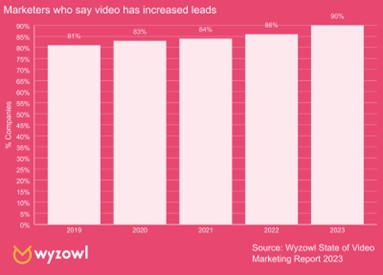Social networks make it all too easy to spend hours mindlessly meandering the internet. Endless waves of new content and 5,000-10,000 ads bombard us each day. That can strain and scramble one’s attention.
Search engines, content sharing sites, and social networks have empowered our minds. They can pour out the complete archive of human knowledge to us in mere seconds – and our brains aren’t ready for it.
Our brains had evolved over thousands of years to process great depths of information. They're now adapting to take in a large breadth of information instead. Research has shown that we frequently take in only snippets of the information we read online. We scan for important topics, get the gist, and move on, instead of deep reading.
As researcher Nicholas Carr wrote in his book The Shallows: What the Internet is Doing to Our Brains: “What we’re experiencing is, in a metaphorical sense, a reversal of the early trajectory of civilization: we are evolving from being cultivators of personal knowledge to being hunters and gatherers in the electronic data forest.”
This approach does have its advantages, for example, access to so many perspectives and insights at a moment’s notice. But the vastness of its content makes the web a tough place for marketers and business owners. How can they convey their messages – especially complex messages – to internet users? How do you stand out to a distractible audience in an overwhelmingly noisy environment?
Writing Content for Internet-Addicted Brains
Respect Common Scanning Patterns
As the web has advanced, so has our ability to analyze its effect on people, especially how people read. Text in a book inspires “deep reading,” that is, taking in and processing new information line by line to build your understanding of a subject.
The internet, on the other hand, is built around “scanning”. It resembles speed reading, which pulls together a broad understanding of a topic by reading only the most “important” lines.
Only the most determined readers still experience digital content line-by-line. Most scan the page for relevant information and key points, usually in these four patterns:

Without headlines to make scanning simpler, users typically default to the standard F Pattern. They scan the entire first paragraph, then the key lines from the second paragraph, then very broadly scan the rest of the content for buttons, headers, and other text that seems important.
Content organized into sections under descriptive headers often prompts users to dart from key element to key element, as in the Spotted and Layer Cake patterns. Writing and designing with the Layer Cake in mind encourages the most engagement with your content. Visitors generally encounter more of your copy while scanning headers for relevant information, as opposed to scanning the entire page for bits of interest.
This is why headers and sections matter so much – and why digital marketers emphasize descriptive, easy-to-understand headers that help people quickly find what they seek. This is great for consumers of web content, but it’s also good for marketers. Skillful copywriters can sink their highest priority messages into headers and drive audience attention in the right direction.
Create Content that’s Valuable to Your Audience – and Nothing Else
Kurt Vonnegut famously instructed writers to “pity the reader.” He believed that authors should be considerate of the time and energy required to read their books and try to provide a meaningful experience without too much fluff. Vonnegut was a great novelist, but the principle applies to all kinds of writing, even to blog articles such as this.
For-profits and non-profits alike tend to overload their sites – and thus overload their site visitors. The temptation to give users everything they could possibly need from your business is hard to resist. But overwhelming users with detail can result in a disorganized sprawl of a site loaded with pages no one visits.
These practices apply down to the individual page. Even if the page starts with a well-defined focus, it can be tempting to keep adding information that might be helpful to users.
Don’t.
Lean, well-crafted, carefully chosen, relevant copy can support your goals by offering visitors meaningful information that suits the purpose of the page and leads them through your site. Too much copy, especially if it’s of dubious relevance, can daunt and distract users.
Clearly define goals for each page you create. Then write the briefest possible copy that allows visitors to navigate your site, encounter key messages, and eventually convert and meet those page goals. The key is to make it easy for them to do what they need to do (and what you want them to do) on your site, whether that’s find information or submit a form or purchase a product. The easier you make that process, the more your target audience will tend to engage positively with your brand.
Show, Don’t Tell
If you can deliver key information with a video, image, or other visual medium instead of writing out walls of text – do that. Like this:

Users are more likely to engage with content that’s supported by some kind of visual storytelling. Nothing I might write about the effectiveness of using video in content would be half as meaningful as the chart above. So, any copy I add would only distract you, my audience, or miss your attention entirely.
You don’t need hours of original video to apply this show-don’t-tell approach to your website. Look for ways to show users what you do through your content, especially imagery and video. Even drab sets of data can be reimagined to be something intuitive, visualized, and interactive. Use the graphic elements of your site, not just text, to get your message across.
Make it Easy to Act
Before writing any copy meant for the web, ask and answer two questions:
- Who do I want this to reach?
- What do I want them to do?
Digital marketing isn’t just about getting traffic - it’s about driving action. An audience seeing your content isn’t enough to make an effective campaign. You need them to see it and make a purchase, contact a salesperson, or enroll at your university, for example. Writing for the web is about supporting those key business goals with copy.
We do that by supporting the audience. That means understanding what information they need most and providing it in the most digestible, easy-to-access way. To meet their needs, you’ve got to know them. Focusing on a specific target audience makes it easier to provide only useful information. The better your understanding of those needs, the more valuable content you can provide. The more useful your content, the greater the likelihood that they’ll choose you instead of your competitors.
In one study, 89% of web users reported visiting a competitor site immediately after having a poor user experience while browsing their first choice.
Strong web copy offers users a road map to your site. In concert with good information architecture and clear design, it paves a smooth, easy path for users to engage your services or buy your products. In the noisy, crowded digital age, the best way to stand out is to stand back and focus on serving the audience first.
If you need assistance with writing for your website, reach out! Our expert digital content team will ensure your website copy meets your users’ needs and drives them to take action.






